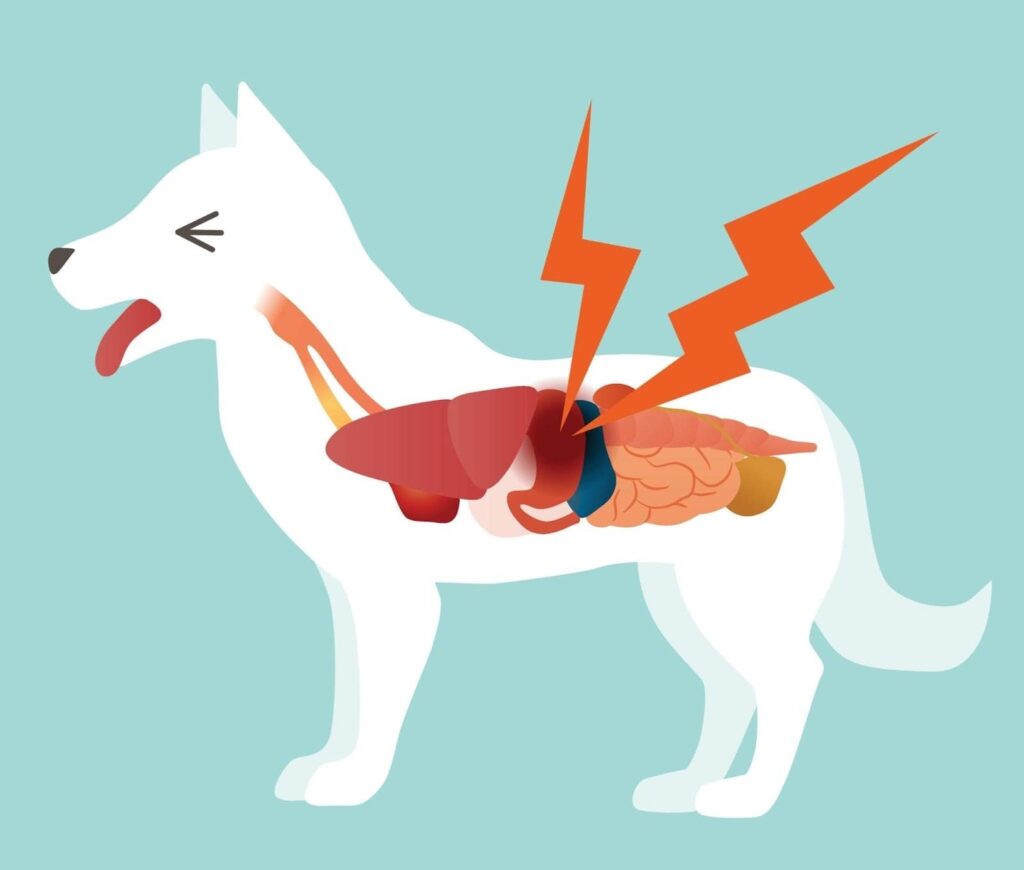Seizures in dogs can be a distressing and alarming experience for both pets and their owners. These episodes can range from mild and barely noticeable to severe and life-threatening. In this comprehensive guide, we will explore various aspects of seizures in dogs, from their types and causes to diagnosis, treatment, and preventive measures.

Contents
Types of Seizures
Seizures in dogs come in different forms, including:
Generalized Seizures
Generalized seizures affect the entire brain and often result in convulsions. During these episodes, your dog may lose consciousness, fall to the side, and experience rhythmic contractions of the limbs.
Focal Seizures
Focal seizures, also known as partial seizures, originate in a specific area of the brain. This can lead to localized symptoms such as twitching in one part of the body, unusual behavior, or even aggression.
Cluster Seizures
Cluster seizures involve multiple episodes occurring in a relatively short period, typically within 24 hours. This can be particularly concerning and may require immediate medical attention.
Status Epilepticus
Status epilepticus is a prolonged and potentially life-threatening seizure that lasts for more than five minutes or occurs in succession without a full recovery of consciousness between episodes. This is considered the worst type and a medical emergency whicn requires immediate intervention by a veterinarian.
Causes of Seizures
Understanding the underlying causes of seizures is crucial for effective management:
Idiopathic Epilepsy
Idiopathic epilepsy is the most common cause of seizures in dogs and often has a genetic basis. It typically manifests between the ages of six months to six years.
Structural Brain Abnormalities
Tumors, strokes, or other structural issues in the brain can trigger seizures. These may be more common in older dogs.
Metabolic Disorders
Certain metabolic disorders, such as liver disease or low blood sugar (hypoglycemia), can lead to seizures in dogs.
Toxins and Poisoning
Ingesting harmful substances like toxins, chemicals, or certain plants can result in seizures. It’s essential to keep your dog away from potential poisons.
Recognizing the Signs
Identifying when your dog is having a seizure is vital for their well-being:
Behavioral Changes
Pay attention to sudden and unusual behaviors in your dog. They may become disoriented, anxious, or agitated before a seizure.
Physical Symptoms
During a seizure, your dog may exhibit physical symptoms like trembling, twitching, or even loss of consciousness. These can be distressing to witness.
Postictal Phase
After a seizure, your dog may appear disoriented, exhausted, or confused. This postictal phase can last for minutes to hours.
Diagnosis and Testing
Seeking a proper diagnosis is essential for effective seizure management:
Veterinary Examination
Your veterinarian will perform a thorough physical and neurological examination to assess your dog’s overall health and look for any underlying conditions.
Blood Work
Blood tests can help identify metabolic disorders or other medical issues that may be contributing to your dog’s seizures.
Imaging
In some cases, your veterinarian may recommend imaging tests such as X-rays or MRIs to check for structural brain abnormalities.
Treatment Options
Managing seizures in dogs involves various approaches:
Medications
Prescription medications like phenobarbital or potassium bromide are commonly used to control seizures. Your veterinarian will determine the most suitable medication and dosage for your dog.
Natural Remedies
Some dog owners explore holistic treatments like CBD oil or herbal supplements. However, it’s essential to consult your veterinarian before trying these options to ensure they are safe and effective.
Diet and Nutrition
A carefully tailored diet can play a role in seizure management. Your vet may recommend a specific diet to help control your dog’s seizures.
Living with a Seizure-Prone Dog
Caring for a dog with seizures requires patience and understanding:
Creating a Safe Environment
Remove potential hazards from your home to minimize the risk of injury during seizures. This includes sharp objects, stairs, or anything your dog could accidentally bump into.
Monitoring and Recording
Keeping a seizure diary can help track the frequency and severity of your dog’s seizures. This information is valuable for your veterinarian when adjusting treatment.
Emotional Support
Dogs with seizures may feel scared or confused during and after an episode. Offering comfort and reassurance can make a significant difference in their well-being.
Preventive Measures
Taking steps to prevent seizures can improve your dog’s quality of life:
Medications for Seizure Management
Follow your veterinarian’s guidance on administering medications as prescribed. Consistency is key to seizure control.
Regular Vet Check-Ups
Routine veterinary visits are essential to monitor your dog’s condition and adjust treatment as needed. Your vet can also provide guidance on managing your dog’s seizures effectively.
Stress Reduction
Stress can be a trigger for seizures in dogs. Providing a calm and stable environment with predictable routines can help reduce your dog’s stress levels.
Huskies and Seizures
Huskies, a popular and energetic breed known for their striking appearance, can also experience seizures. While not exclusive to this breed, it’s essential for Husky owners to be aware of their potential susceptibility to seizures. Regular check-ups and a safe environment are crucial for Huskies prone to seizures.
FAQs
Seizures in dogs can often be managed but may not be completely cured. The goal is to reduce their frequency and severity through treatment and preventive measures.
No, not all seizures in dogs are epilepsy. Epilepsy is a specific condition characterized by recurrent seizures. There are various other causes of seizures in dogs, as outlined in this article.
No, you should never give your dog human medications without veterinary guidance. Dogs require specific medications tailored to their needs, and the wrong medication can be harmful.
Yes, it’s common for dogs to appear tired and disoriented after a seizure. This is known as the postictal phase, and it’s a natural part of the seizure process.
Conclusion
Seizures in dogs can be a challenging condition to manage, but with the right knowledge and support, you can help your furry companion lead a happy and comfortable life.
